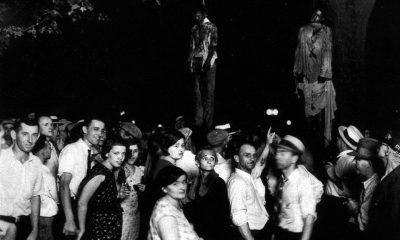World
Uruguay : Liberty Or Death

Uruguay is a small country located in South America, situated between Argentina to the south and Brazil to the north. Despite its small size, Uruguay has a rich and fascinating history that has played a crucial role in shaping its modern-day identity. From the early indigenous peoples who inhabited the region to the present-day democracy, the story of Uruguay is a tale of conquest, revolution, and evolution.
Early History
The history of Uruguay dates back to more than 10,000 years ago, with the arrival of the indigenous people, including the Charrúa, Guaraní, and Chaná tribes. These people had established complex social structures and sophisticated systems of agriculture, hunting, and fishing. They were skilled artisans and craftsmen, producing pottery, textiles, and jewelry.
In the late 15th century, the first European explorers arrived in the region, including the Portuguese navigator, Juan Díaz de Solís, who named the Rio de la Plata. In the 16th century, the Spanish established a colony in the region, which became known as the Viceroyalty of the Río de la Plata. Uruguay was part of this colony until the early 19th century.
Independence and Early Nationhood
The early 19th century saw a series of revolutions that swept across South America, as people rose up against the Spanish colonial rule. In 1811, the people of Montevideo, the capital of Uruguay, established a provisional government, which declared independence from Spain in 1815. However, the newly formed state faced significant challenges, including internal strife and conflicts with neighboring countries.
In 1825, a group of Uruguayan exiles returned from Argentina to launch a revolution against the Brazilian Empire, which had annexed Uruguay. The revolution was successful, and Uruguay was declared an independent nation in 1828. The new state faced a turbulent period, marked by political instability and territorial disputes with its neighbors. In 1843, a civil war erupted, which lasted for nine years, and left Uruguay deeply divided.
Modernization and Democracy
Despite the turmoil of the 19th century, Uruguay began to modernize in the early 20th century. The country experienced economic growth, fueled by the export of wool and meat, which helped to create a thriving middle class. The government invested in public education, social welfare, and infrastructure, which helped to raise living standards for the population.
Uruguay became one of the most progressive nations in South America, and in 1904, it became the first country in the world to establish a welfare state. The country also granted women the right to vote in 1932, making it one of the earliest countries in the world to do so.
However, in the mid-20th century, Uruguay was swept up in the political turmoil that plagued much of Latin America. In the 1960s and 1970s, a left-wing guerrilla movement emerged, which was met with a harsh response from the government. The military seized power in 1973, and the country was ruled by a dictatorship for the next decade.
Return to Democracy
The dictatorship in Uruguay was marked by widespread human rights abuses, including the disappearance of thousands of people. However, in the 1980s, a movement for democracy began to gain momentum. In 1984, free and fair elections were held, and a new constitution was adopted, which established a system of government based on separation of powers, civil rights, and democratic institutions.
Since the return to democracy, Uruguay has made significant progress in promoting human rights, social welfare, and economic development. The country has a high standard of living, a strong social safety net, and a vibrant cultural scene. Uruguay has also become a leader in renewable energy, with the aim
Uruguay has a history of racism that has impacted its society in various ways. The roots of racism in Uruguay can be traced back to the colonial period, when European powers established colonies in South America. The Spanish Empire established a colony in what is now Uruguay in the early 17th century, and for the next three centuries, the indigenous peoples of the region were subjected to oppression and discrimination. The Spanish colonizers brought with them their own racial hierarchy, which placed white Europeans at the top and indigenous peoples at the bottom.
The legacy of colonialism persisted in Uruguay even after the country gained independence from Spain in 1828. In the late 19th and early 20th centuries, European immigration to Uruguay increased significantly, and the country’s population became more diverse. However, racial discrimination continued to be a pervasive problem. European immigrants were often favored over indigenous peoples and Afro-Uruguayans, who were subjected to segregation and marginalization.
One of the most significant events in the history of racism in Uruguay occurred in the early 20th century. In 1905, the government of Uruguay passed a law requiring all inhabitants of the country to carry identification cards. The law was ostensibly intended to control immigration, but it had the effect of singling out Afro-Uruguayans and indigenous peoples, who were required to carry special cards identifying them as members of these groups. The law was not repealed until 1913, but its legacy persisted for many years.
In the mid-20th century, a number of Afro-Uruguayan organizations emerged, seeking to challenge the racist attitudes and policies of the government and society at large. One of the most notable of these organizations was the National Association of Afro-Uruguayans (ANAU), which was founded in 1978. ANAU advocated for the rights of Afro-Uruguayans, and worked to raise awareness of the country’s history of racism and discrimination.
In recent years, there has been growing recognition in Uruguay of the need to confront the country’s legacy of racism. In 2009, the government established the National Institute for the African-Uruguayan Population (INAFRO), which is responsible for promoting the rights of Afro-Uruguayans and raising awareness of their contributions to Uruguayan society. In 2015, the government of Uruguay formally apologized to the descendants of the indigenous peoples who were subjected to genocide and forced labor during the colonial period.
Despite these efforts, however, racism remains a persistent problem in Uruguay. Afro-Uruguayans and indigenous peoples continue to face discrimination in many areas of society, including education, employment, and housing. The legacy of colonialism and the enduring effects of racial inequality mean that there is still much work to be done to create a more just and equitable society in Uruguay.

-

 States2 weeks ago
States2 weeks agoPearlie Golden 93-Year-Old Black Woman Shot By Texas Cop
-

 States2 weeks ago
States2 weeks agoLayers Of Racial Tension The Mario Woods Tragedy And San Francisco Path To Justice
-

 States2 weeks ago
States2 weeks agoTragedy Unveils Racial Tensions Tarika Wilson Story
-

 States2 weeks ago
States2 weeks agoLynching Of Thomas Shipp Tragedy Of Racism Echoes Through History
-

 States2 weeks ago
States2 weeks agoThe Killing Of Terence Crutcher And The Fight For Racial Justice

















You must be logged in to post a comment Login